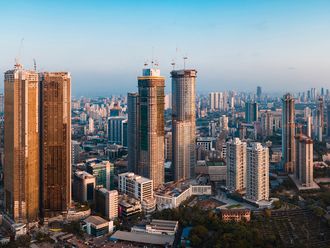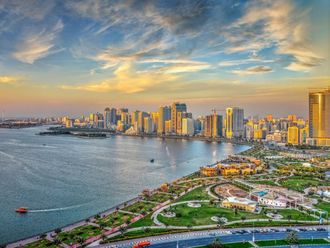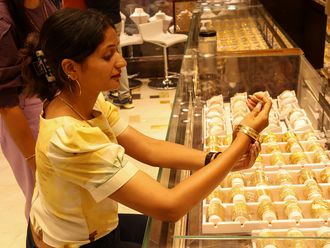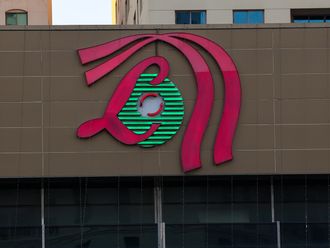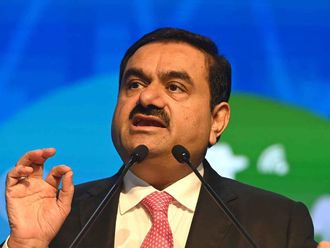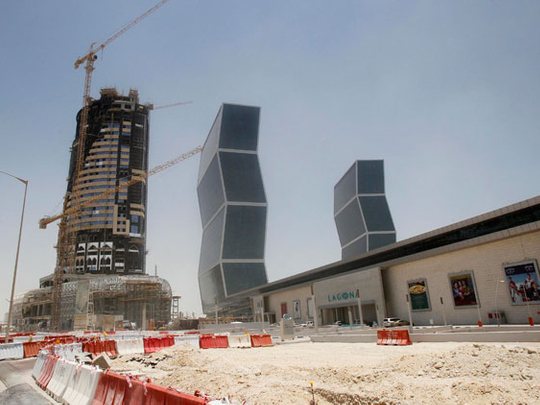
Dubai/Doha: Qatar’s real estate developers are struggling even as the country embarks on huge infrastructure building plans — a warning to investors that despite the billions which the Gulf state is throwing around, they won’t necessarily profit.
A $7.1 billion (Dh26 billion) state financial support package announced last month for Qatar’s largest listed developer, Barwa Real Estate, and the restructuring of other top developers such as United Development Co and state-owned Qatari Diar, highlight the industry’s weakness.
Barwa and Diar have cut staff and sold assets to manage their debt. Last October Barwa announced plans to sell more assets in Qatar and Egypt to pay down loans.
Qatar is competing with Dubai as a regional financial centre, and it does not lack money; its natural gas reserves make it one of the richest countries in the world per capita.
But the performance of its real estate industry in the last few years raises questions over whether it has the population size and glamour to become a major market for property developers and investors.
The tiny desert state has a population of about two million, only about 250,000 of them local citizens. That is similar to Dubai’s size, but Dubai has the rest of the United Arab Emirates as a hinterland, and so far at least, it is winning the competition to establish itself as a base for professionals who work around the Gulf.
“There’s no incentive for people to stay long in Doha,” said Matthew Green, head of research at real estate consultancy CBRE in Dubai.
“Doha clearly needs to build on other components of its tourism, leisure and lifestyle aspects. Currently they don’t have a leisure market, which is its fundamental difference to neighbouring Dubai.” Morning flights to Doha from Dubai are packed with executives and professionals who prefer to live in Dubai and take the hour-long flight to work in the Qatari capital.
“I take a flight to Doha on Sunday morning and return on Wednesday. Life is more comfortable in Dubai, and my family will never agree to move to Doha,” said a Dubai-based consultant who did not wish to be identified due to commercial sensitivities.
Infrastructure
Qatari real estate developers are hoping this will change as Qatar launches plans to spend about $140 billion over the next decade on a rail system, a new airport, a seaport, and hundreds of kilometres of major new roads, in addition to stadiums that will host the 2022 World Cup soccer tournament.
These projects are expected to boost Qatar’s population in coming years as engineers, managers and labourers arrive to build them. The government hopes the World Cup will leave Doha established as a major international city.
It is not clear, however, that much of the money being poured into infrastructure building will reach Qatar’s real estate developers; a large amount will go to foreign contractors with the size, expertise and experience to handle the projects.
Early last month, for example, Qatar awarded four design and build contracts worth about $8.2 billion for phase one of the Doha Metro. But foreign firms such as Italy’s Impregilo and South Korea’s SK Engineering & Construction dominated the winning consortiums.
Qatar’s Galfar Al Misnad Engineering and Contracting was in a consortium that won one of the contracts, but its share price did not rise significantly in response and it is now languishing near its level at the end of last year. Shares in Barwa are down 3 per cent since the end of 2012.
In Dubai, property developers have moved from residential projects into building shopping malls, resorts and entertainment facilities, reducing their exposure to swings in housing prices.
In Qatar, this process has not occurred on the same scale.
“Dubai is providing facilities to further develop its tourism sector like water parks, large resort hotels and other entertainment facilities,” said Duncan Gray, director and country manager for Qatar at consultancy Colliers International.
“There’s currently a general lack of such facilities in Doha and there is limited evidence so far of efforts in that direction.” Some analysts attribute this to the fact that most major Qatari real estate developers are linked to the state through shareholdings, and may therefore focus more on the government’s agenda than profit- or investor-driven projects.
In May, Barwa unveiled plans to build a $5.5 billion island off the coast of Doha that would include luxury villas and a water park. But the project would also be used to anchor cruise ships providing temporary accommodation for the World Cup; this could help to prevent a shortage of accommodation during the tournament, but might do little to ensure a steady stream of income for Barwa or improve the livability of downtown Doha.
Barwa, 45 per cent owned by the real estate arm of Qatar’s sovereign wealth fund, has acquired assets in France, Switzerland, Britain and other countries in line with the country’s overseas investment strategy.
“The majority of the major real estate projects in Doha are being driven by government and quasi-private organisations,” said Gray.
Undersupplied
Some analysts believe Doha’s residential real estate market is fundamentally undersupplied, which should provide opportunities for developers.
Colliers thinks residential demand will reach about 242,000 units by 2017; based on government projections and the current construction pipeline, it estimates total supply will be only 138,235 units in that year.
Most apartments in Doha are two- and three-bedroom units, with an acute shortage of studio and one-bedroom apartments. As a result, monthly rent for a one-bedroom apartment can go as high as 10,000 riyals (Dh10,086) in a middle-income community.
“Right now there’s probably more properties priced for the smaller part of the market than the larger majority,” said Gray.
But incentives for developers to fill this gap are limited by rules restricting the purchase of properties by foreigners.
There are just three designated freehold zones in Doha where foreigners can buy.
This contrasts with Dubai, which has more freehold property zones for foreigners and has established itself as a destination for investors from around the Middle East, despite the crash of its real estate market in 2009-2010. A partial rebound of Dubai property prices this year has helped to attract money that might otherwise have gone to Qatar.
“Opportunities for investors are currently limited in Doha.
The market is still relatively young and has as yet not matured in the sense of opportunities — but these will come over time if the economy broadens,” said Gray.



